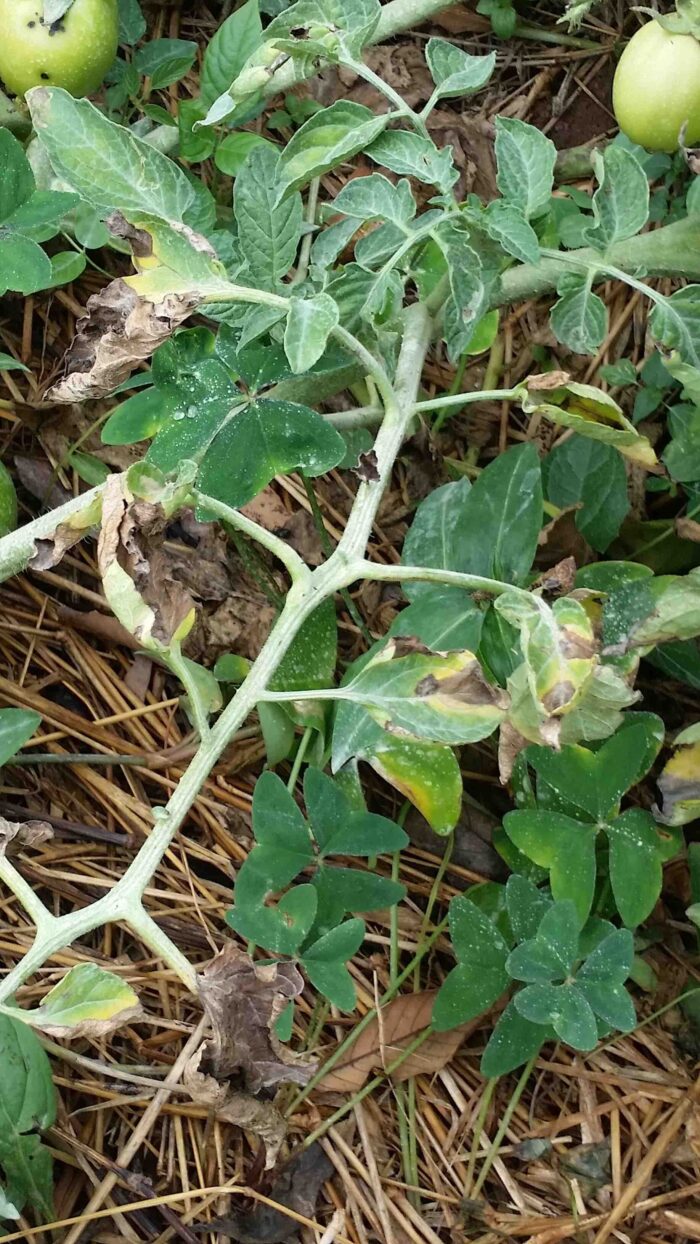Brûlure précoce
Members of the solanaceae family, but mainly found on tomato, potato, eggplant, and okra
When it comes to tomato and potato plants, early blight is one of the most prevalent fungal diseases in the world. Early blight can be found wherever tomatoes and potatoes are cultivated. The pathogen, Alternaria solani, can survive on plant debris that were left behind in fields. Additionally, several weeds serve as potential sources of infection.
An early blight infection is likely to occur during periods of warm and humid weather. The fungus is able to penetrate plant tissues through cuticle, stomata, and injured tissues. Symptoms can be seen within several days after the initial infection. Generally speaking, the infection starts on older leaves causing typical concentric necrosis rings. As the disease progresses, a formation of yellow halos can occur around the spots. When left untreated, the infection leads to substantially dry canopies and deformed and unmarketable fruits.
Utilisez des variétés de plantes et des semences résistantes à la maladie.
Assainissement: Gardez l’environnement proche des cultures en éliminant les mauvaises herbes, les débris de plantes, les parties endommagées, la croissance indésirable des plantes et les plantes à proximité qui ne sont ni cultivées ni protégées.
Diverses techniques peuvent être prises pendant la croissance des cultures pour réduire les risques d’infection et de propagation.:
* Conservez un espace adéquat : évitez les plantations trop denses afin de permettre à la lumière de pénétrer. Cela permet aux feuilles et aux fruits de sécher rapidement les jours humides.
* Assainissement Les débris végétaux doivent être enlevés pendant la culture. Désinfectez l’équipement qui entre en contact avec des plantes infectées. Ne laissez pas du matériel ou des travailleurs traverser le champ lorsque le feuillage est humide.
* Air Circulation : Dans les structures fermées, favoriser l’assèchement du feuillage et réduire la durée des périodes de mouillage en introduisant une zone ventilée avec des rideaux en filet.
* Drainage du sol : La présence d’eau stagnante favorisera la maladie.
* D’autres techniques de réduction de l’humidité comprennent le revêtement du sol avec des feuilles de polyéthylène afin de réduire l’évaporation du sol.
Les produits utilisés dans une ou plusieurs régions du monde peuvent contenir les ingrédients suivants :
chlorothalonil, l’iprodione, difénoconazole, cymoxanil, famoxadone, azoxystrobine, thiophanate de méthyle, pyraclostrobine, tebuconzole, mancozèbe, et maneb.
*Names marked in red are considered to be highly poisonous to beneficial insects.
*Names marked in green are considered to be organic and IPM (integrated pest management) compatible.
Image Gallery


